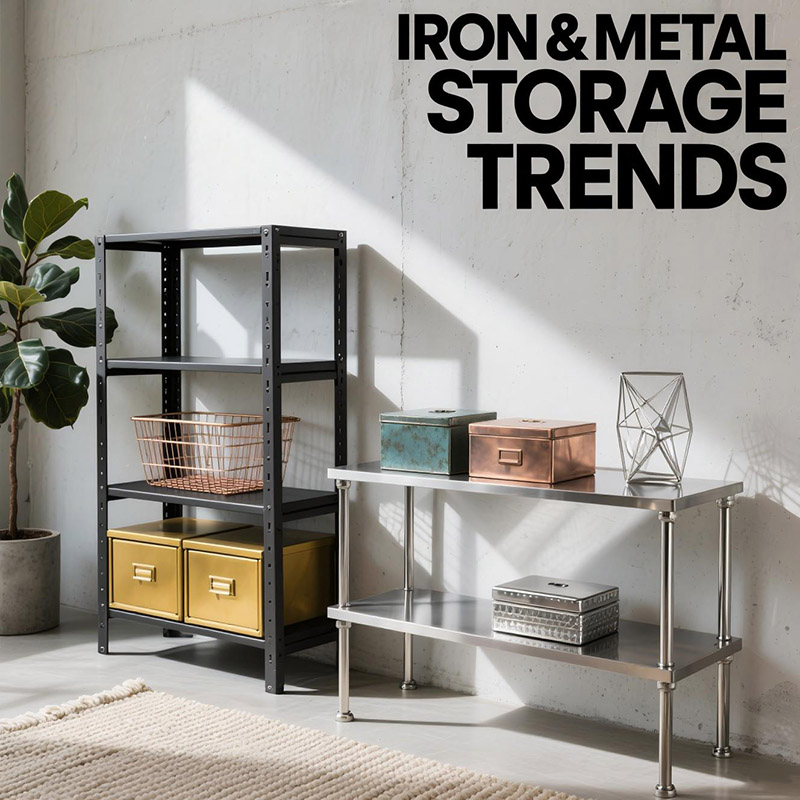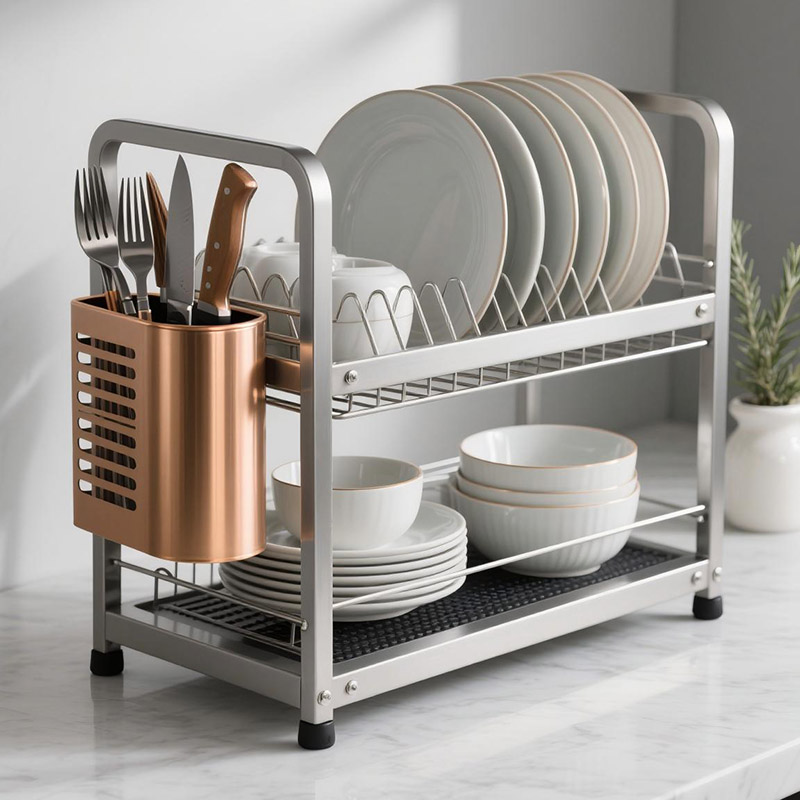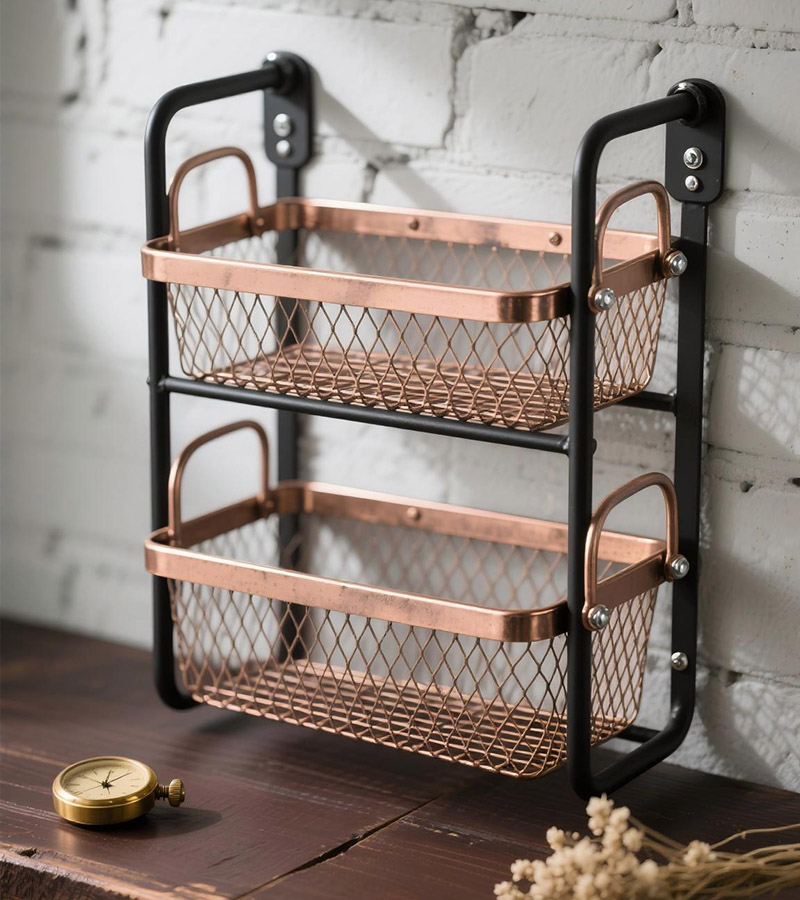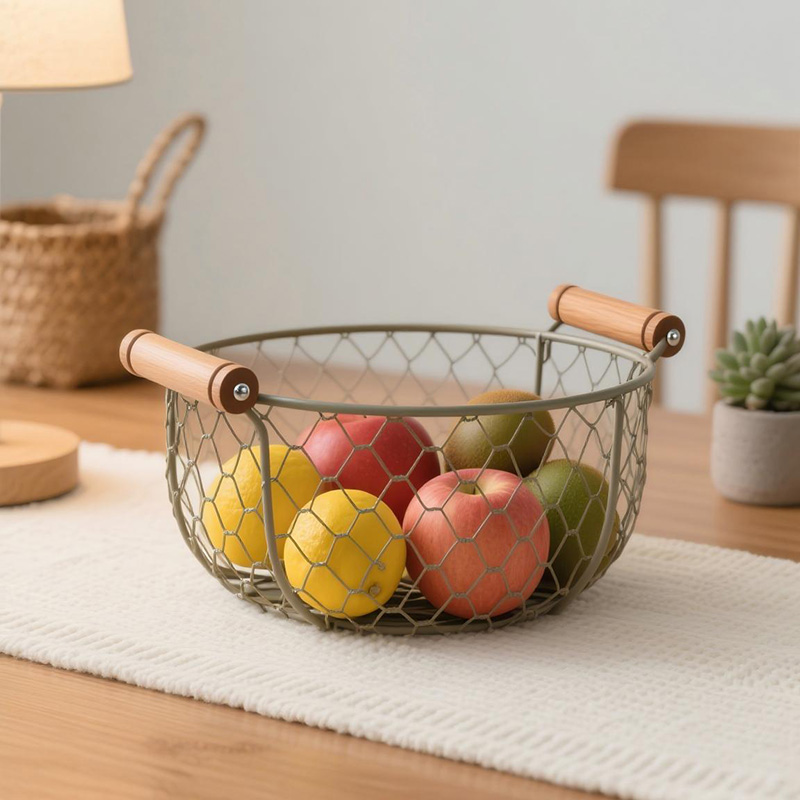Is metal mix and match fashion popular?
In today's home design field, the innovative use of metal materials is redefining our living space in unprecedented ways. Has metal home furnishings evolved from purely functional products to practical and aesthetic works of art in daily life? How does this transformation reflect the lifestyle and value pursuits of contemporary consumers?
According to a global home market research report, the metal home goods market is expected to reach a scale of billions of dollars by 2025, with a compound annual growth rate of around 5.3%. This growth trend is closely related to the changes in contemporary residential space, the trend of consumption upgrading, and the progress of material science. Especially in the post pandemic era, people are paying more attention to the health, functionality, and aesthetics of their home environment. Metal household items are highly favored due to their durability, ease of cleaning, and environmental characteristics.

Multi material integration: how does the new language of home design evolve?
The artistic and functional balance of material combination has become the core feature of current metal home design. The combination of stainless steel and non-ferrous metals is a typical example: stainless steel provides structural strength and corrosion resistance, while non-ferrous metals add a warm texture and a light luxury atmosphere. This combination not only meets the basic functional requirements of the product, but also creates a visual hierarchy through material comparison. For example, a Kitchen Storage Rack with a stainless steel frame and copper plated surface treated knife and fork barrels, knife holders, and other accessories not only ensures load-bearing capacity, but also enhances overall quality through the metallic luster of details.

The combination of iron and copper colors showcases another design concept. The steady and heavy iron contrasts sharply with the lively and agile copper. Through clever proportioning, designers can create home products that are both industrial and warm. It is worth noting that this material combination is not only reflected in appearance, but also achieves functional complementarity - for example, the iron frame is paired with a copper plated Storage Basket, designed with a detachable structure for easier assembly, dual color matching, retro elegance.

Cross material fusion is breaking down traditional material boundaries. The combination of metal and natural materials is particularly eye-catching: kitchen racks with stainless steel brackets and bamboo or solid wood partitions not only ensure load-bearing strength but also add natural elements, softening the icy feeling of metal. This type of design responds to modern consumers' pursuit of a natural and environmentally friendly lifestyle, while meeting both practical and aesthetic needs. Research shows that over 65% of urban consumers are willing to pay a premium for home products containing natural materials.
The advancement of surface treatment technology has provided more possibilities for material bonding. From traditional electroplating and spraying to current nano coating and physical vapor deposition (PVD) technology, metal surfaces can achieve various color and texture effects. For example, PVD technology can form colors such as rose gold and gun black on the surface of stainless steel, making the transition of different materials more natural and harmonious. These technologies not only enhance the aesthetics of the product, but also strengthen the corrosion resistance, wear resistance, and easy cleaning properties of the metal.
Intelligent integration: How can metal home products become smarter?
Intelligent function integration is an important development direction for metal home products. Modern household items are transitioning from passive tools to active smart devices. For example, a stainless steel kitchen rack with built-in LED lighting not only provides lighting functions, but also controls switches through sensors to improve usability; An intelligent storage basket equipped with a humidity sensor can monitor the freshness of fruits and vegetables and remind consumers to consume them in a timely manner.
Humanized design details are increasingly being valued. Considering the characteristics of metal materials, designers have made extensive optimizations in edge treatment, connection methods, mobility, and other aspects. For example, a metal kitchen rack designed with rounded edges to avoid potential harm caused by sharp corners; The metal storage basket with added silicone cushion layer not only prevents scratching the desktop, but also increases the silent effect during use.
The application of modular design concept in metal household products is becoming increasingly widespread. Consumers can freely combine different metal modules according to their spatial needs to create personalized storage systems. This design not only improves the adaptability and service life of the product, but also meets the needs of modern consumers for flexibility and customization. Market data shows that sales of modular home products have increased by over 40% in the past three years.
Under the new economic normal, which metal household products have greater market potential?
In the current global economic environment, consumers are more inclined to choose products with high cost-effectiveness and durability. Inflation pressure and rising living costs make consumers more rational in their purchasing decisions, focusing on the long-term value of products rather than short-term trends. This consumer mentality creates unique opportunities for metal home products, as metal products typically have a longer lifespan and better durability.
Metal household items with the following characteristics have greater market potential:
Multi functional combination products such as expandable stainless steel kitchen rack systems can be flexibly adjusted according to space requirements, meeting consumers' dual needs for practicality and adaptability. This type of product is particularly suitable for urban small-sized residents who need to maximize the use of limited space. When developing such products, attention should be paid to the universality of connectors and the availability of extended components.
Environmentally friendly and sustainable design uses products made from recycled metal materials, which not only conforms to environmental protection concepts but also reduces costs. A fruit basket made of recycled aluminum is not only lightweight, but can also present a high-quality appearance through surface treatment. Environmental attributes are becoming an important purchasing decision factor, especially for young consumer groups. Research shows that over 70% of millennial consumers are willing to pay higher prices for environmentally friendly products.
The health oriented design of fruit storage baskets with antibacterial coatings or multi-layer kitchen shelves made of food safety grade materials is in line with the high attention to healthy homes in the post pandemic era. The application of technologies such as silver ion coating and copper based antibacterial surface can significantly reduce bacterial growth, making it particularly suitable for food storage products.
Space optimized products are wall mounted metal household items designed for small apartments, such as foldable iron vegetable and fruit racks, which not only save space but also maintain aesthetics. This type of product should focus on installation convenience and structural stability, while considering compatibility with various wall materials.
Emotional design products cannot be ignored either. In times of economic uncertainty, consumers often tend to purchase products that can bring emotional comfort. Metal household items can provide emotional value through warm colors, soft curves, and comfortable surface treatments. For example, Fruit And Vegetable Basket coated with warm tones can create a more cozy atmosphere than traditional stainless steel products.

Metal household items have completely surpassed their traditional role as functional carriers and evolved into a comprehensive living art that deeply integrates material science, intelligent technology, and design aesthetics. This transformation profoundly reflects the sublimation of contemporary consumer values in life: from pursuing basic practicality to advocating sustainable environmental protection concepts, intelligent interpersonal interaction, personalized spatial expression, and aesthetic experiences that can bring emotional comfort. In the future, with the continuous innovation of technology and design, metal homes will continue to empower our living spaces with smarter, more humane, and more vibrant forms, becoming an indispensable element in defining modern high-quality life.
